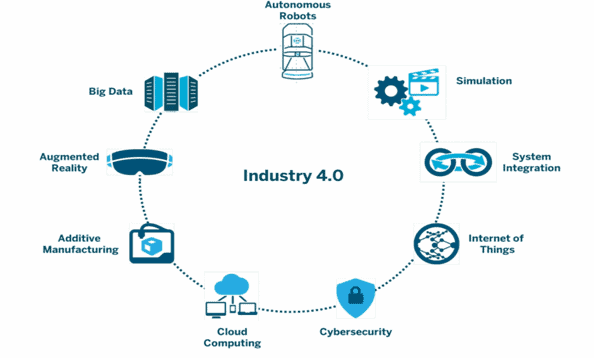One of the biggest stories in manufacturing over the past decade has been the slow but steady reversal of the global outsourcing that characterized the last decades of the 20th century. Despite the narrative (common across a range of political ideologies) that manufacturing in North America has been gutted, the truth is that the United States is currently at peak industrial production — the third new peak to be reached since the Great Recession.One of the most important factors driving this resurgence has been the massive breakthrough in technology, software, and automation that have allowed businesses in Canada and the United States to compete with cheaper labour markets in the Asia and South America.

For those who follow manufacturing technology and news, one of the hottest buzzwords of the past few years has been “Industry 4.0,” or the fourth industrial revolution. Key developments in important technologies relating to manufacturing, such as smart machines that can communicate through Wi-Fi, have led to more integrated production lines, which in turn has reduced the need for raw labour.
Traditionally, the need for rigorous quality control has placed limits on how far automation can go, but recent advances in metrology equipment and software have made more integrated systems possible in ways that would have been previously unimaginable. One of the most important advances has involved coordinate measuring machines (CMMs), which have long been a cornerstone of quality management in assembly lines around the world. CMMs use tactile probes to quickly and accurately gather precise information about the dimensions of recently produced parts, then compare the electronic maps they generate to the CAD blueprints for the parts, which in turn makes it possible for them to catch errors in production.
With the latest software on the market, however, CMM measuring equipment can now not only monitor quality control, but also to use high-level point cloud data to map wear and tear on machinery upstream in the production process. By analyzing gradual changes in quality over time, CMMs can now raise red flags about potential issues of degradation and part wear before they become a problem. Equipped with programs like PolyWorks Inspector, CMMs can now use the vast quantities of data they gather to create a picture of the production line’s health over time, bringing producers one step closer to a production line that monitors and corrects itself. As this technology becomes more widely adopted, it is sure to spur further developments in production line automation.
In many ways, manufacturing is at a crossroads. The most optimistic projections suggest that a world of near-full automation, in which most industrial process can be completed robotically and even day-to-day activities like driving are managed by computers, is just over the horizon. More cautious voices suggest that as competition drives down labour costs automation we may be approaching an innovation plateau. Either way, the dogmatic notion that manufacturing has fled North American never to return is quickly giving way to a new era of optimism about the future of the domestic market.
 Gearfuse Technology, Science, Culture & More
Gearfuse Technology, Science, Culture & More


